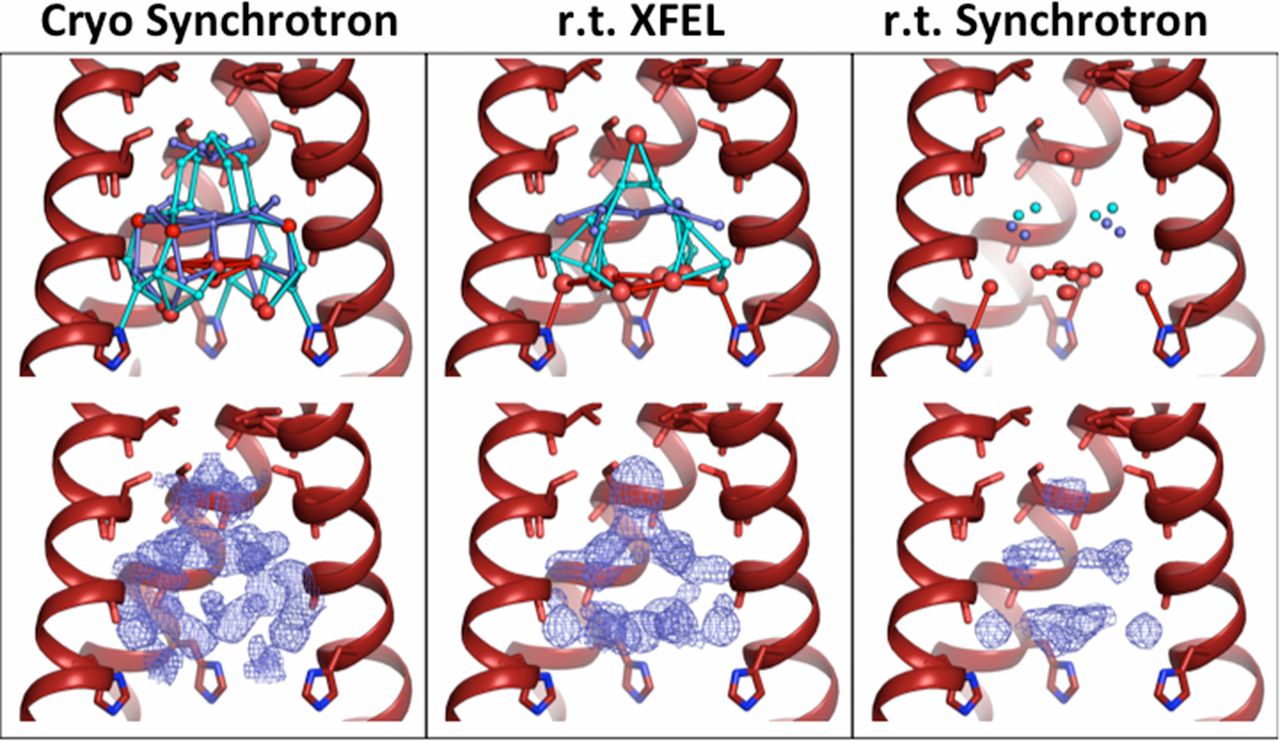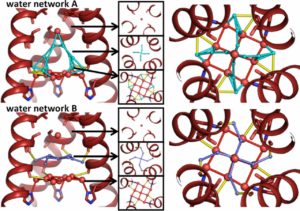Molecular Biophysics & Integrated Bioimaging (MBIB) Division scientists Aaron Brewster, Nicholas Sauter, and James Fraser were part of an international team led by William DeGrado at UCSF that used an X-ray free-electron laser (XFEL) source to visualize the arrangement of water molecules inside the influenza matrix 2 (M2) channel at room temperature. The M2 channel of influenza A is essential for the reproduction of the flu virus, making it a target for therapeutics, and it is also a model system for studying how protons are transported across a membrane bilayer. The XFEL method overcomes the limitations of previous crystallographic structures obtained using synchrotron radiation with cryocooling. While cryocooling helps to preserve crystals against rapid radiation damage, it imparts an artificially higher degree of order of the water molecules than structures obtained near room temperature. By using room temperature XFEL to study the M2 channel at various pH conditions, the researchers have gained a more accurate picture of the behavior of water molecules and their role in proton transport in these channels. The study was published in the Proceedings of the National Academy of Sciences.
Thank you for visiting our newly redesigned website. Please complete this quick survey to let us know your thoughts.
Was this page useful?
Send





